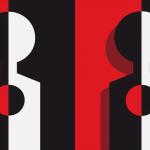On July 20, just after James Holmes wounded 58 and killed 12 people at the opening of the latest Batman film at an Aurora, Colorado movie theater, The Telegraph published a “history of mass shootings in the US since Columbine”—a list of nearly 30 shooting sprees with lethal results. Ne’er-do-wells who merely wounded didn’t make the cut. Thus, not included on the list was a shooting spree in an Alabama bar with a multiple arson warm-up just two days earlier. There, enraged after having been fired from his job—only the latest in a string of personal and financial calamities—Nathan Van Wilkins fired into a bar from across the street, wounding or otherwise injuring 17 people but not killing anyone.
Likewise, the non-fatal, apparently gang-related shootings of four girls in a Chicago park on July 11 was omitted. The shooter or shooters there have not been apprehended, but Chicago mayor Rahm Emanuel offered a warning that, as I will discuss shortly, hardly helps matters for those of us who are concerned about what seems to be a growing tide of mass violence. “Take your stuff to the alley,” Emanuel was quoted as saying. “Don’t touch the children of the city of Chicago. Don’t get near them.”
Our digital-age attention spans generally being what they are, we can’t expect the Telegraph or NPR, which went more global with its list, to provide the 62-pages of gun-wielding detail offered by the Brady Campaign To Prevent Gun Violence. Still, in less than a month since the Aurora shootings, two more killers have become eligible for the newsmaker list: Wade Michael Page, for an attack on a Sikh temple in Oak Creek, Wisconsin on August 5; and Thomas Caffall, who laid siege to a College Station, Texas neighborhood this week.
Read the rest here















